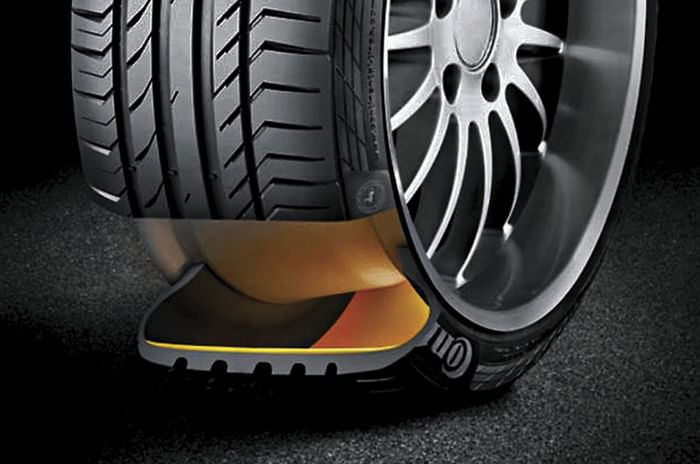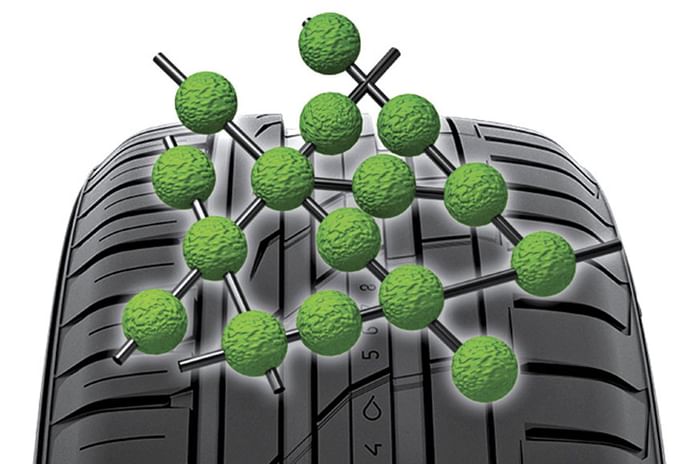Tyres are the point of contact between you and the road, and while people do realise the role they play in grip, most underestimate this and also neglect the other areas they have an impact on, like ride quality, road noise and braking.
Since tyres play a large and vital role in your everyday motoring here’s a guide to help you understand the different types of tyres, which are the right ones for you and how to maintain them in the best possible way. Let’s begin with choosing the right type of tyre. Listed below are the criteria based on which you can differentiate the types of available tyres.
Tyre Classification
Construction

While most cars today are equipped with tubeless tyres, some still have tube tyres. Most manufacturers have progressed to tubeless tyres as they are more reliable, safer, discharge less air, are long-lasting and don’t puncture that easily. So, if you are in the market for new tyres, tubeless is the way to go assuming, of course, the rim can handle one. You should check that before you buy.
Compound

Tyre-makers use different compound mixes of natural and synthetic rubber, silica and carbon black for better performance, efficiency, and life. Generally, a harder compound will offer longer life but lesser road grip and performance. Thus, when buying a tyre, read the description and buy a set based on what your priorities are.
Weather
Given our climate, we typically use all-weather tyres, however in very cold regions you would be better off with winter tyres. These tyres have a higher natural rubber content, helping them stay supple in low temperatures. The tread pattern will also help in dissipating snow. However, for deep snow, it’s best to either fit snow chains or special snow tyres that have embedded metal studs.
Based on tread pattern
Symmetric tread
If you look at the contact surface, these tyres have the same pattern on the inside and outside, they have lower rolling resistance, which increases efficiency, and they can also be fitted without worrying about the direction of travel.
Asymmetric tread
The inside and outside of the tyre have different tread patterns. The inside edge has treads that dissipate water efficiently and the outer edge is designed for better cornering grip. They can be fitted to either side of the vehicle but always with the correct side facing out.
Unidirectional tread
These tyres have a ‘V’-shaped tread pattern which helps maximise wet grip. They are also usually more silent while running. They must always be fitted in the correct direction of travel.
Based on application
Highway
For cars that are rarely taken off-road and primarily driven on paved roads. These tyres are designed to offer good road grip in both dry and wet weather conditions. Depending on type, some are designed with better performance or better fuel efficiency in mind.
All-terrain
These tyres achieve a balance between on-road and off-road driving. They have bigger tread blocks which allows for easier dissipation of water and good grip on off-road surfaces. They can also be used on-road but offer lower grip as compared to highway tyres.
Mud terrain
These tyres are specifically designed for off-road use through terrain like mud, slush, rocks, etc. They have big tread blocks that grip on a variety of surfaces and terrains. They are extensively used for off-roading and not suitable for on-road driving.
Size it up
Upgrading your wheels and tyres is a growing trend among the car users these days. Although, is it really necessary to upgrade? What if you want to stick to the stock wheel-tyre combo?
Not a problem at all. Manufacturers do extensive research before finalising the right size for your wheel and tyre, which is a balance between comfort, performance and efficiency. However in some cases, cars are under-tyred in the interest of efficiency, so if you would like to upsize for better performance or even aesthetics, here’s how to do it.
How much do you upsize?
The right way to upsize is by not moving too far away from the standard total diameter of the wheel. This would create problems with your ride and handling balance, affect your suspension components and may foul with the wheel arches. Also, the width should not be beyond the wheel arch, as this could have the same adverse affects.
Bear in mind, a wider tyre will help the stability of the car and increase grip while driving. On the flip side, it will reduce the car’s top speed, affect its fuel efficiency and increase steering effort.
While upsizing, it is recommended to stay within the limit of 3 percent from the total wheel diameter. Tyre width is inversely proportional to the sidewall height (profile), so if you want to go for wider tyres, the corresponding sidewall height will have to go down. Keeping the limit in mind and your requirements, you can either keep the same rim diameter or up the size.
Let’s use the Swift ZXi as an example and upsize it for easier understanding. You can calculate the total wheel diameter by adding the wheel rim size to the sidewall size. The ZXi has 185/65 R15 tyres. Here, 185 is the width in mm, 65 is the aspect ratio and 15 is rim diameter in inches (1 inch = 25.4mm).
Total diameter of the tyre = (65 percent of 185) x 2 + (15 x 25.4) mm = 621.5mm
Now, you can keep the rim size constant and go for wider tyres as well, or get different profile tyres. Below are some of the options to which you can upgrade which are within the 3 percent range of the standard total wheel diameter.
For 15-inch rims - 215/60 R15 (2.82 percent), 205/60 R15 (0.89 percent)
For 16 inch rims - 225/50 R16 (1.59 percent), 205/55 R16 (1.67 percent)
For 17 inch rims - 255/40 R17 (2.3 percent), 225/45 R17 (2.06 percent)
- Tyre width – The number 215 indicates the width of the tyre in millimetres. Generally, a broader tyre will offer better grip but lower efficiency.
- Aspect ratio – This represents the height of the sidewall in a percentage. Here the number 65 indicates that the sidewall height is 65 percent of the tyre’s width.
- Rim diameter – Indicated by R17, where ‘R’ stands for Radial and ‘17’ is the diameter of the rim in inches.
- Load index – ‘95’ stands for the tyre load index and indicates your tyre’s maximum safe weight-carrying capacity. (In this case, 95=690kg)
- Speed index – The letter ‘H’ indicates the maximum speed for the tyre when the vehicle is fully loaded. (In this case H=210 kph).
5 steps to keep your tyres happy
1. Inspection
A proper visual inspection can help prevent tyre failure at an early stage. Do check the tyre surface and sidewall for any irregularities like bulges, cuts and cracks. Remember to check the inner surface too. Cracks due to stones, glass or other debris on the road can get wider over time and result in tyre failure. Check your rims, too – a damaged rim can also lead to tyre failure over a period of time, hence should be replaced as soon as possible. If you notice a nail but your tubeless-tyre pressure is normal do not pull it out as this will cause the air to escape. Get it repaired at the earliest.
2. Checking tread wear
Tyres have a tread-wear indicator marked by a small arrow on the outer wall of the tyre. If you follow the arrow on the tread face, you will find the wear indicator on the tyre surface, and if the outermost layer of tyre touches the tread wear indicator, it’s time for a replacement. Any tyre with less than 2mm of depth left should be replaced as soon as possible.
3. Check tyre pressure
It’s recommended that you get your tyre pressure checked every two weeks, including that of the spare. This is important as improper inflation can result in uneven wear of the tyre surface. Also, wrongly inflated tyres have a higher chance of bursting when on highways. Make sure that you get the tyres checked when they are cold. The recommended tyre pressure is usually mentioned on the driver-side door sill and in the owner’s manual.
4. Tyre rotation
Rotating tyres is the best way to have equal tyre wear across all tyres and thus extend their service life. The rotation of tyres depends on the type of vehicle, i.e. front-wheel drive, rear-wheel drive or four-wheel drive (refer image). Wheel rotation is recommended every 10,000km.
5. Wheel alignment and balancing
Wheel alignment is the calibration of suspension and tie-rod settings. If your car is pulling to one side or suffering from uneven tyre wear, or there are vibrations in the steering, getting your wheels aligned can fix those issues. Steering vibrations can also be due to an unbalanced tyre. To balance it, the wheel is rotated at a high speed to check if there’s an imbalance and weights are added to the rim to balance them out. It is recommended to balance your tyres every 10,000km.

